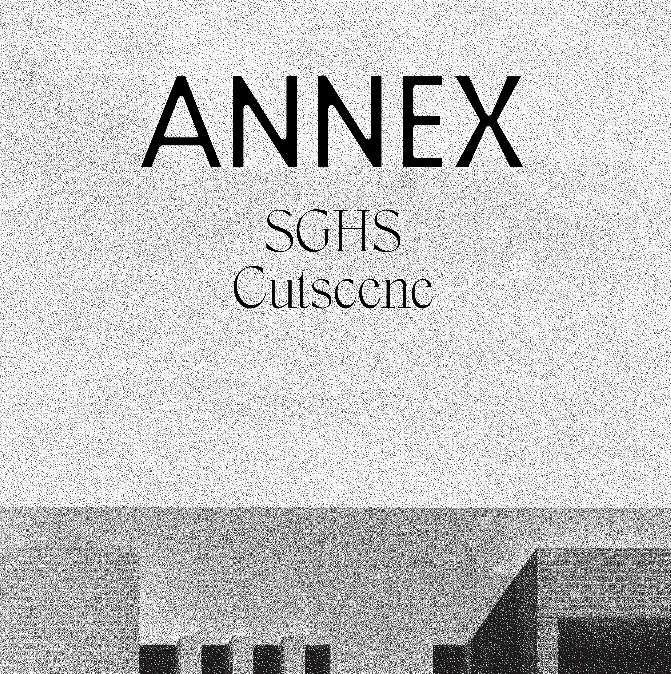
| Period| | 2020.07.21 - 2020.07.23 |
|---|---|
| Operating hours| | 12:00 - 19:00 PM |
| Space| | factory2/Seoul |
| Address| | 15, Jahamun-ro 10-gil, Jongno-gu, Seoul, Republic of Korea |
| Closed| | Mon. |
| Price| | Free |
| Phone| | 02-733-4883 |
| Web site| | 홈페이지 바로가기 |
| Artist| |
SGHS(강현석, 김건호)
|
정보수정요청



|
|
Exhibition Information
This exhibition was supported by the Korean Culture and Arts Council in 2020. In 2020, the Creation Office of Visual Arts seeks to revitalize the entire stage from the creation of visual arts to the spread of visual arts. About the Project Beyond Factory 2's first-floor exhibition hall, you can go up to the second floor to find the Annex Project Space. This place displays the creative motivation and process of a creator. Here the creators show: (1) works other than official work activities; (2) creations being collected or produced in the interests of the creator's individual interest; (3) collections for the creation; (4) intermediate creations showing the process; (5) secondary creations after creation. By showing this, the creator recounts what he wanted to say in his creation and what was coordinated and edited until he came up with the finished creation. Readers who read it look at exhibits and trace back creators and creations. It could be a search for a character, an inquiry into an object, or an inquiry into an event. At any stage, Annex wants to be a reference point for the next project by bringing out small attempts. There is no distinction between genres. It can be a person, it can be an object, it can be a work, it can be a project. It doesn't have to be complete or intact. About the Artist SGHS Design Company is an architectural office established in 2015 by Kang Hyun-suk and Kim Kun-ho, with emphasis on narratives and textonic. Kang Hyun-suk studied at Sungkyunkwan University and Cornell Graduate School of Architecture and worked at the Basel office of Herzog & Demolong. After graduating from Sungkyunkwan University, Kim Kun-ho worked in Jeongnim Architecture and DMP Architecture, and later graduated from Cornell Graduate School of Architecture and Harvard School of Design. He participated in the <Graphics Design 2005-2015> (Seoul, 2016), the National Museum of Modern and Contemporary Art's 30-year special exhibition <voyage of Imagination> (Seoul, 2016), was selected as the final candidate for the <Young Architect Program 2017> and participated as an artist in the Korean Pavilion of the <Venice Architecture Biennale, 2018>. Artist Note Something that should be specific, descriptive, and bright. This is the principle that the SGHS design company has had the final submitted images of most of the phenomenon design, which has been carried out from the 2014 <Design Competition for Historical Sites Outside Seosomun> to the 2020 <Design Competition for the Construction of the Seoul Cultural Resources Center>. It was an inevitable strategy in that the design of the phenomenon usually deals with public architecture for an unspecified number of people, so objectivity comes first, and that only limited images and panels should effectively communicate with the judges and draw sympathy. SGHS Design Company has carried out more than 20 phenomenon design projects so far. However, most of them failed to complete the mission. They do not exist in reality and are only built in numbers in computer 3D modeling programs. Pac-Man, who wandered through the maze under the control of the player to consume countless yellow spots, cut off the interaction within the cut scene and became a self-moving entity, creating a situational play with Blinky. The cut scenes of the 10 projects presented in this exhibition escape from the link of interaction given by the phenomenon design and reveal their bodies intact. In a virtual environment where all artificial lights except the sun are off, the tectonic and depth of each space are performed solely through projected light and shadow. The camera no longer stays under the compulsion of reproducing the "perfect composition viewed from 1.5m person's eye level" but captures the moment of the cut-off negatives as it is. Most of the scenes created by the scripted Sun and Mass, which were moving along the mouse, flashed in front of us every process, were discarded because they did not fit the purpose and sequence of the presentation, and soon disappeared into silent oblivion. The cut scene, which appears in the middle of a video game, marks the completion of a specific mission and the beginning of a subsequent mission. Each scene creates an atmosphere, and suggests the next direction through dialogue or emotional connections between characters. The indiscriminate combination of 10 cut scenes may be remembered as one cut scene in the uncertain future for SGHS design firms to walk forward. Launched in 1980, the original Pacman remained an endless game due to errors caused by overflow at level 256. [Source] Factory 2 Homepage
